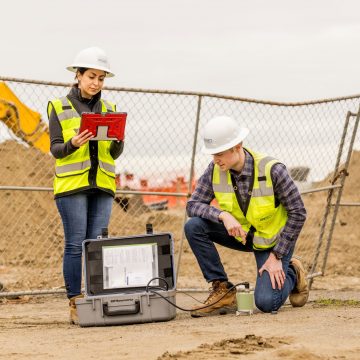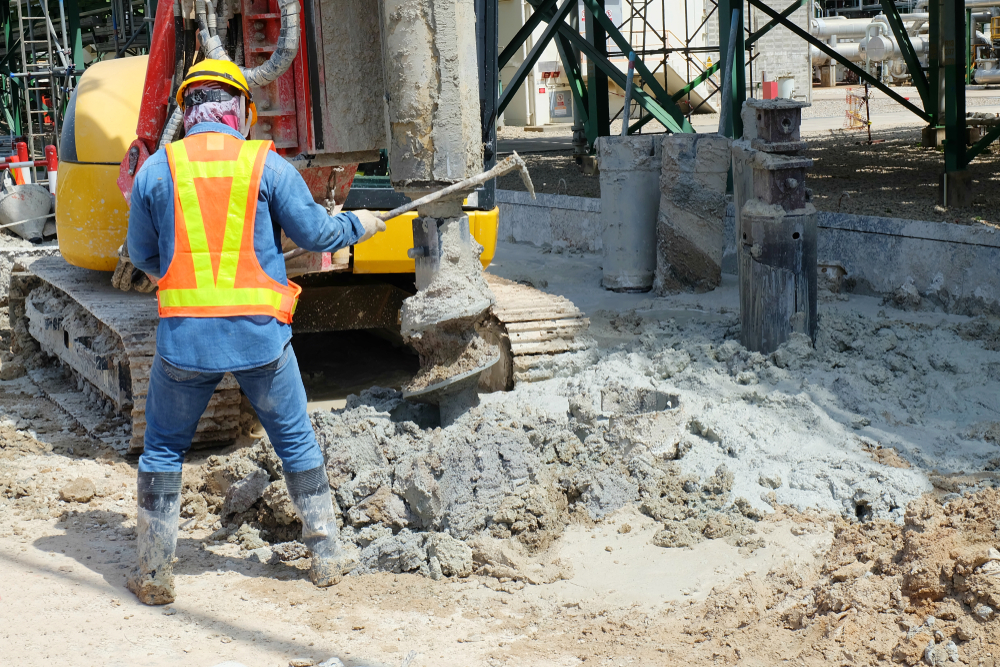The 4-Minute Rule for Consulting Engineers
Wiki Article
Consulting Engineers Fundamentals Explained
Table of ContentsThe Consulting Engineers StatementsHow Consulting Engineers can Save You Time, Stress, and Money.Consulting Engineers Things To Know Before You BuyHow Consulting Engineers can Save You Time, Stress, and Money.Consulting Engineers Can Be Fun For Everyone3 Easy Facts About Consulting Engineers ExplainedHow Consulting Engineers can Save You Time, Stress, and Money.
In circumstances where the existing soil can not sustain a framework, ground improvement strategies are employed. These can include compaction, dirt reinforcement with geosynthetics, and the addition of maintaining agents. The objective is to raise the bearing capacity and lower settlement to acceptable degrees. Ground enhancement is an affordable option to deep foundation in certain cases, as it reduces the amount of excavation and the requirement for additional structural assistance.Grouting strategies fill spaces in the dirt to increase bearing capability and reduce negotiation, producing a much safer setting for residents in earthquake-prone areas. The planet is an awesome and occasionally unpredictable companion in building endeavors. Building sites may provide tough dirt conditions, such as expansive clay or karst topography. By addressing these issues head-on, jobs can wage confidence when faced with the toughest terrains.

The 5-Second Trick For Consulting Engineers
Skyscrapers in city facilities frequently face the difficulty of restricted room and the visibility of surrounding structures. Geotechnical design has played a vital duty in the success of such projects by using ingenious foundation styles that lessen influence on the surrounding environment. By making use of techniques like base and micro-piling, designers have been able to sustain high-rises on websites that were formerly assumed improper.Whether it's the structure of a new home, the foundations of a substantial bridge, or the stablizing of a skyscraper, the role of geotechnical engineering is universal. By recognizing the earth, we lead the means for smarter, stronger, and safer building and construction practices (Consulting Engineers). The symbiotic partnership between geotechnical design and modern-day construction is just one of long-lasting value and need
The 20-Second Trick For Consulting Engineers
To provide the finest experiences, we make use of innovations like cookies to store and/or access gadget info. Consenting to these innovations will allow us to process data such as searching habits or unique IDs on this site.They carry out website investigations, accumulate samples, carry out laboratory examinations, and examine data to review the suitability of the ground for building projects. Based on their findings, geotechnical designers provide recommendations for structure layout, slope security, retaining frameworks, and reduction of geotechnical hazards - Consulting Engineers. They work together with various other professionals, such as engineers, architectural designers, and construction teams, to make certain that geotechnical considerations are integrated right into the total job layout and execution
They translate the information to understand the buildings and actions of the dirt and rock, including their stamina, permeability, compaction qualities, and groundwater problems. Geotechnical Analysis and Layout: Geotechnical designers analyze the data collected during website investigations to examine the security and viability of the site for building and construction projects. They execute geotechnical computations and modeling to assess elements such as bearing ability, negotiation, slope stability, side earth stress, and groundwater circulation.
5 Easy Facts About Consulting Engineers Shown
Foundation Layout: Geotechnical engineers play a vital role in making structures that can securely sustain the designated structure. They analyze the soil problems and load demands to identify the proper foundation kind, such as shallow foundations (e.g., grounds), deep structures (e.g., piles), or specialized strategies like dirt improvement. They take into consideration aspects such as negotiation restrictions, birthing ability, and soil-structure interaction to create optimal structure styles.Here are some sorts of geotechnical engineers: Foundation Designer: Structure designers concentrate on creating and analyzing foundations for structures. They examine the dirt problems, load requirements, and site qualities to establish the most proper structure type and style, such as superficial foundations, deep structures, or specialized strategies like pile structures.
They carry out field testing, accumulate samples, and examine the gathered information to identify the soil buildings, geologic developments, and groundwater problems at a website. Geotechnical Instrumentation Designer: Geotechnical instrumentation designers focus on tracking and determining the actions of dirt, rock, and frameworks. They mount and keep instrumentation systems that keep track of elements such as dirt negotiation, groundwater levels, incline movements, and structural displacements to examine efficiency and supply early cautions of possible concerns.
Consulting Engineers for Beginners
In the office atmosphere, geotechnical designers make use of specialized software devices to execute estimations, produce layouts, and analyze data. They prepare reports, review project specs, connect with customers and staff member, and coordinate project tasks. The office setting offers a favorable environment for research, evaluation, and cooperation with various other experts associated with the job.
Geotechnical engineers also operate in specialized geotechnical learn this here now laboratories. In these facilities, they conduct experiments, do examinations on soil and rock examples, and analyze the engineering residential properties of the materials. Geotechnical laboratory designers work extensively in these atmospheres, dealing with testing tools, operating tools, and tape-recording data. They team up with other research laboratory team to make sure precise and trusted screening outcomes.
Facts About Consulting Engineers Uncovered

This details can be utilized for a lot a lot more. Maintain visit this website reading as we provide down the numerous objectives of geotechnical examinations and why it is necessary in geotechnical engineering. Geotechnical site examination is important in the building procedure since it intends to recognize and supply information on the site's subsurface conditions.
These include the groundwater problems, engineering issues, kinds of dirts or rock, and gauging the thermal resistivity of soils. Such problems establish numerous factors, including how costly the building job will certainly be, what sort of foundation is needed, how the framework will certainly be developed, and so on. No matter the type of building being done, whether a home, pipeline, or a huge shopping center, a geotechnical examination their explanation has to be accomplished.
Some Ideas on Consulting Engineers You Need To Know
They are: This is where geotechnical engineering takes area to understand the area's geology. All in all, it is done to analyze the physical conditions of the soil.This is commonly where they utilize borings or drillings to take out soil examples. Various other than this, the engineers will additionally visually evaluate the soil for rock and water.
As soon as designers have actually conducted their investigation, they will need to create proposed services. Comprehending subsurface conditions prior to the building of the site is vital to guarantee that the framework is constructed securely and can be effectively sustained.
Report this wiki page